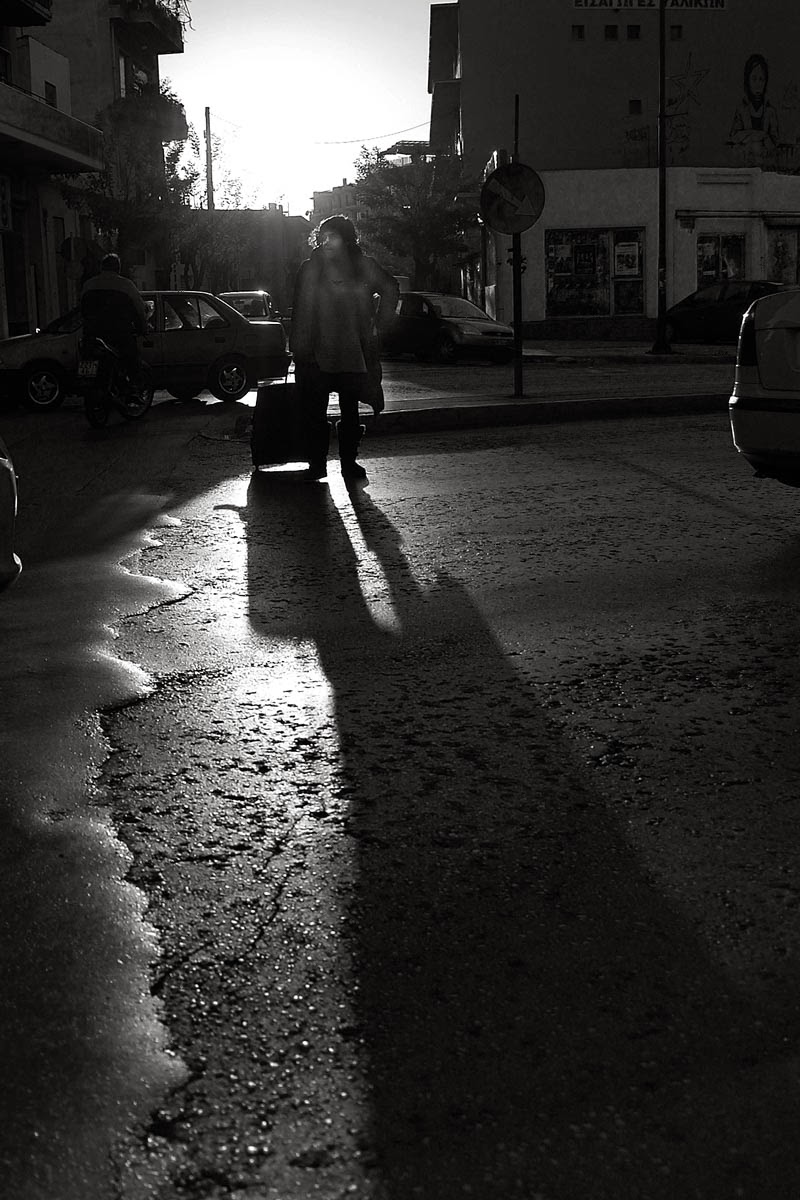The Sacred Way |
Roads connecting ancient towns to important sanctuaries, such as Athens and Eleusina were named
«sacred». The official name of the Athenian Sacred Way was «Eleusinian», according to incriptions. It was assumingly established in the Late Helladic period
(1600-100 BC) for reasons of communication between the settlements of Athens and Eleusina. The cult of
Demeter is dated to the 11th century BC or earlier. By the mid 8th century, the use of the Sacred Way had been
well established. Eleusina became part of the Athenian state in the second half of the 6th century, during the Peisistratid tyranny. The sanctuary acquired new buildings and the Sacred Way was remodelled and stayed in use throughout Antiquity.
The sanctuary declined with the gradual rise of
Christianity and the severe imperial decrees against paganism in the 4th century AD. Finally, Alaric’s Visigoths sacked the place in 395 AD and turned it to ruins. Nonetheless, the Sacred Way continued to link Eleusina
and the surrounding villages to Athens. Many parts of the
ancient road remained visible in the 19th century. Parts of the ancient road have been exposed at
Kerameikos and at the plain of Kephisos river, such as in front of the 9th Primary School at Chaidari. Road terraces are built with stone boulders set on the natural chalk. The lower road surface layer is the bedrock with artificial
chalk soil fill for natural cavities. The middle layer is a fill of chalk soil and small boulders. The upper layer
is cobbled. There are intermediate layers of sand and gravel. Another major part of the road has been exposed further to the west. Smaller parts have been located to
the east too, within the Chaidari municipality.
A great and well preserved part of the Sacred Way has been excavated close to the sanctuary of Aphrodite at Aphaia Skaramanga, while many more but shorter parts have been exposed from there to Eleusina. The average road width is 5 m.
Rocky slopes, such as the Echo hill (today Kapsalonas hill, on the northeast foot of Mt Poikilo), were dug
out, while downslopes were terraced in order to
support the road. In sandy areas, such as around Lake
Koumoundourou the underlayer was cobbles and soil.
The part in front of the Sanctuary of Aphrodite preserves wheel furrows.
source: Municipality of Chaidari
«sacred». The official name of the Athenian Sacred Way was «Eleusinian», according to incriptions. It was assumingly established in the Late Helladic period
(1600-100 BC) for reasons of communication between the settlements of Athens and Eleusina. The cult of
Demeter is dated to the 11th century BC or earlier. By the mid 8th century, the use of the Sacred Way had been
well established. Eleusina became part of the Athenian state in the second half of the 6th century, during the Peisistratid tyranny. The sanctuary acquired new buildings and the Sacred Way was remodelled and stayed in use throughout Antiquity.
The sanctuary declined with the gradual rise of
Christianity and the severe imperial decrees against paganism in the 4th century AD. Finally, Alaric’s Visigoths sacked the place in 395 AD and turned it to ruins. Nonetheless, the Sacred Way continued to link Eleusina
and the surrounding villages to Athens. Many parts of the
ancient road remained visible in the 19th century. Parts of the ancient road have been exposed at
Kerameikos and at the plain of Kephisos river, such as in front of the 9th Primary School at Chaidari. Road terraces are built with stone boulders set on the natural chalk. The lower road surface layer is the bedrock with artificial
chalk soil fill for natural cavities. The middle layer is a fill of chalk soil and small boulders. The upper layer
is cobbled. There are intermediate layers of sand and gravel. Another major part of the road has been exposed further to the west. Smaller parts have been located to
the east too, within the Chaidari municipality.
A great and well preserved part of the Sacred Way has been excavated close to the sanctuary of Aphrodite at Aphaia Skaramanga, while many more but shorter parts have been exposed from there to Eleusina. The average road width is 5 m.
Rocky slopes, such as the Echo hill (today Kapsalonas hill, on the northeast foot of Mt Poikilo), were dug
out, while downslopes were terraced in order to
support the road. In sandy areas, such as around Lake
Koumoundourou the underlayer was cobbles and soil.
The part in front of the Sanctuary of Aphrodite preserves wheel furrows.
source: Municipality of Chaidari

No comments:
Post a Comment